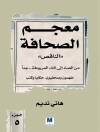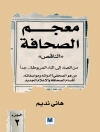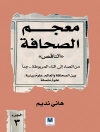Global Journalism Practice and New Media Performance provides an overview of new and traditional media in their political, economic and cultural contexts while exploring the role of journalism practice and media education. The authors examine media systems in 16 countries, including China, Russia and the United States.
Cuprins
1. Introduction: Trends in Global Journalism and New Media Performance; Yusuf Kalyango Jr. and David H. Mould 2. Media Educators Evaluate U.S. Journalism Practice; Sally Ann Cruikshank, Ashley Furrow and Yusuf Kalyango Jr. PART II: NEW VS. TRADITIONAL MEDIA 3. Case 1: Russia: New Media Reshape the Social and Political Agenda; Alexander Kazakov 4. Case 2: Palestine: New Media, Same Old Political Agenda; Mohammed Abualrob and Diana Alkhayyat 5. Case 3: China’s New Media Paradox: Economic Gains, Political Troubles; Ke Wang and Guoping He 6. Case 4: Armenia: New Media Transform Politics; Suren Deheryan 7. Case 5: Jordan: State of Online Newspapers for Journalists and Readers ; Aysha Abughazzi 8. Case 6: Turkey: Live Coverage of Protests Pre-empted by Penguins; E. Nezih Orhon and D. Alper Altunay 9. Case 7: El Salvador: Digital Media and Social Campaigns—Libro Libre; Silvia Callejas Contreras 10. Case 8: India: ICTs and the Empowerment of Rural Women; Peddiboyina Vijaya Lakshmi PART III: JOURNALISM PRACTICE AND MEDIA PERFORMANCE 11. Case 1: Ghana: The Politicization of Liberalized Media; Wilberforce S. Dzisah 12. Case 2: Colombia: An Ethnographic Study of Digital Journalistic Practices; Silvia Montaña 13. Case 3: Taiwan: Journalism Education and Media Performance; Huei Lan Wang 14. Case 4: Guyana. The Rebirth of Journalism Education with Project Phoenix; Carolyn Walcott 15. Case 5: Yemen: Presidential Political Discourse during the Revolution; Murad Alazzany 16. Case 6: Suriname: The Land Rights Issue and Media Performance; Rachael van der Kooye 17. Case 7: Kyrgyzstan: Challenges for Environmental Journalism; Gulnura Toralieva 18. Conclusion: Prospects on Global Journalism Practice and New Media; David H. Mould and Yusuf Kalyango Jr.
Despre autor
Mohammed Abualrob, Birzeit University, West Bank Aysha Abughazzi, Jordan University for Science and Technology, Jordan Murad Alazzany, Sana’a University, Yemen Diana Alkhayyat, Birzeit University, West Bank D. Alper Altunay, Anadolu University, Turkey Silvia Callejas Contreras, Universidad José Matías Delgado, El Salvador Sally Ann Cruikshank, Auburn University, USA Suren Deheryan, Yerevan State Linguistic University, Armenia Wilberforce S. Dzisah, Institute of Journalism, Ghana Ashley Furrow, University of Memphis, USA Guoping He, Guangdong University of Foreign Studies, China Yusuf Kalyango Jr., Ohio University, USA Alexander Kazakov, Saratov State University, Russia Silvia Montaña, Universidad Externado de Colombia, Colombia Peddiboyina Vijaya Lakshmi, Sri Padmavati Mahila Visvavidyalayam, India David H. Mould, Ohio University, USA E. Nezih Orhon, Anadolu University, Turkey Gulnura Toralieva, American University of Central Asia, Kyrgyzstan Rachael van der Kooye, Journalism Academy, Suriname Carolyn Walcott, University of Guyana, Guyana Huei Lan Wang, Nan Hua University, Taiwan Ke Wang, Guangdong University of Foreign Studies, China












